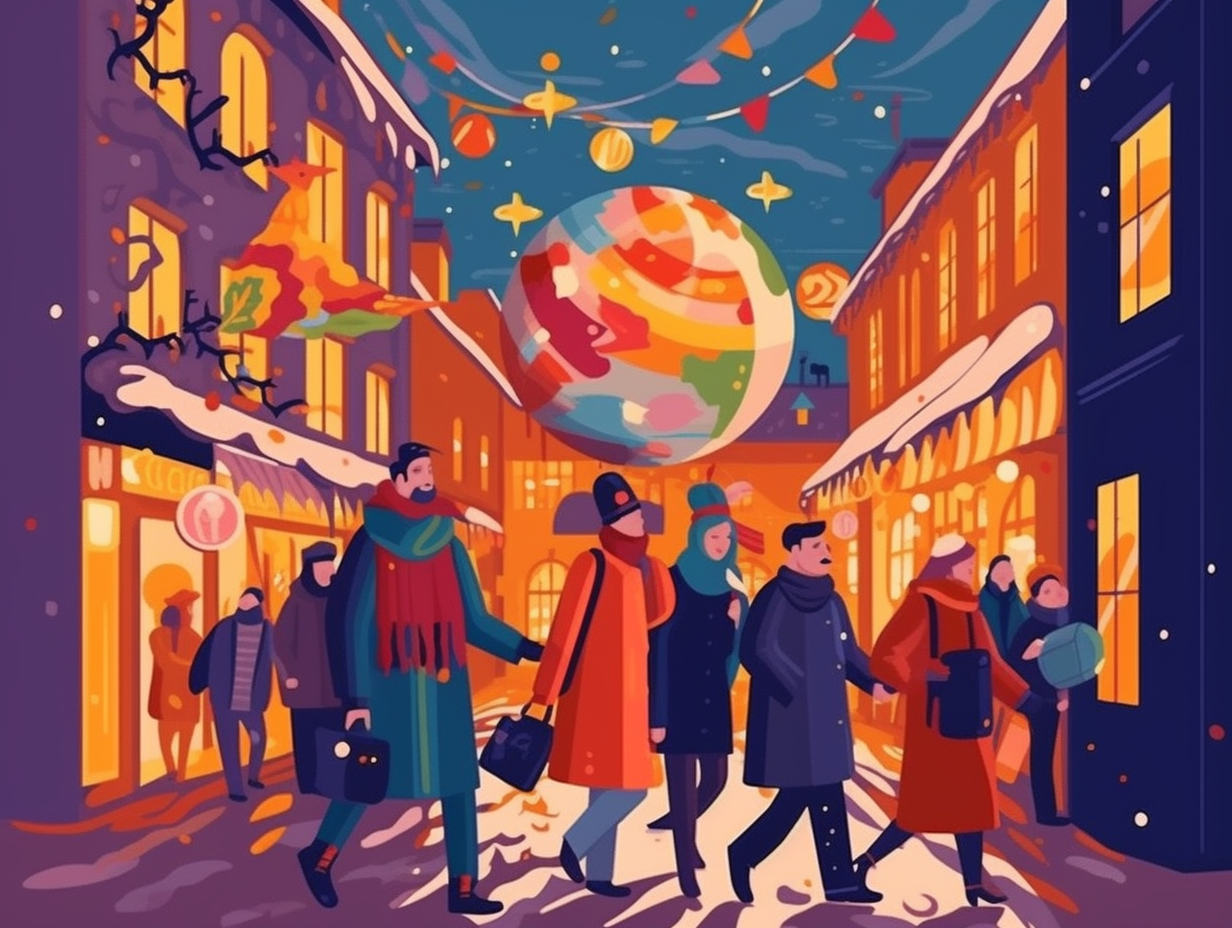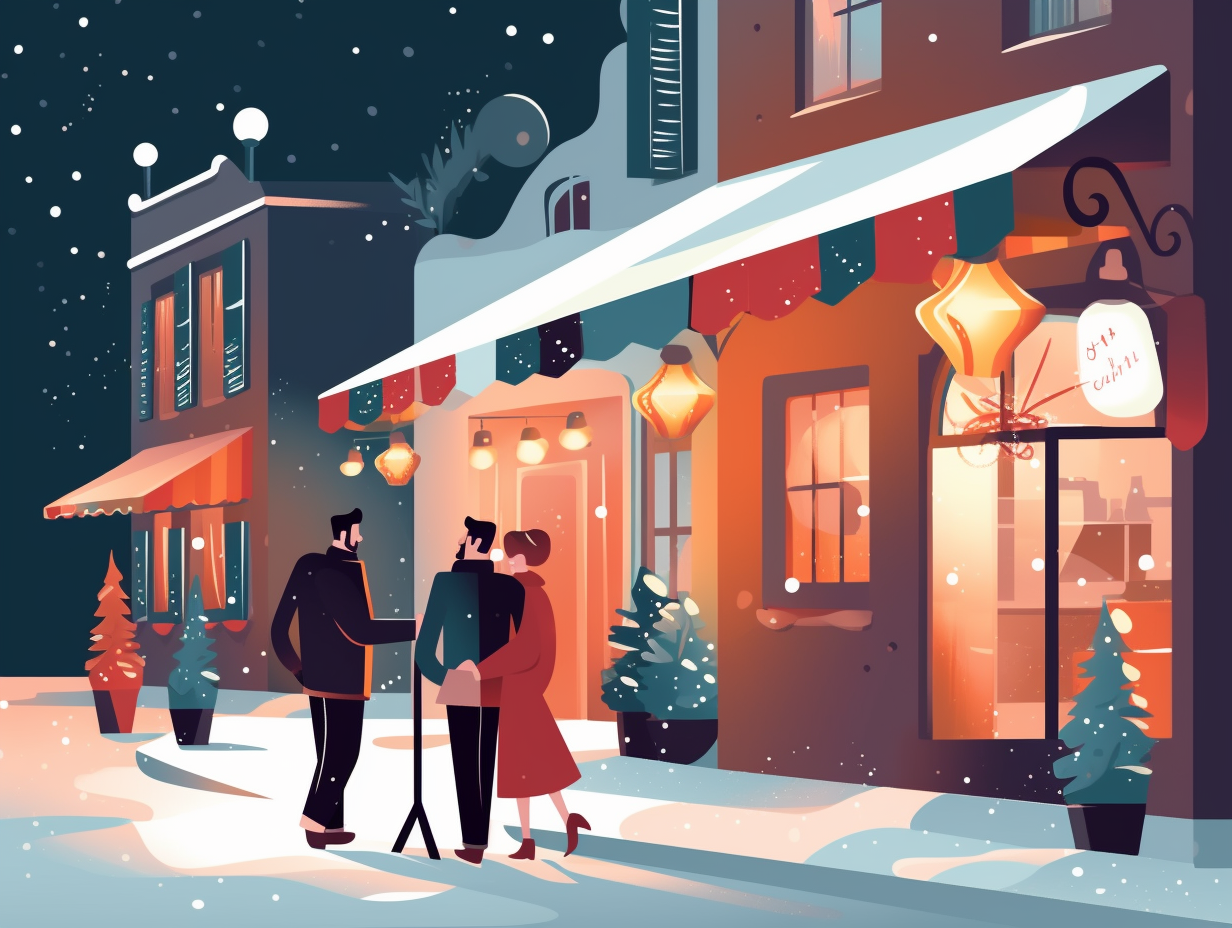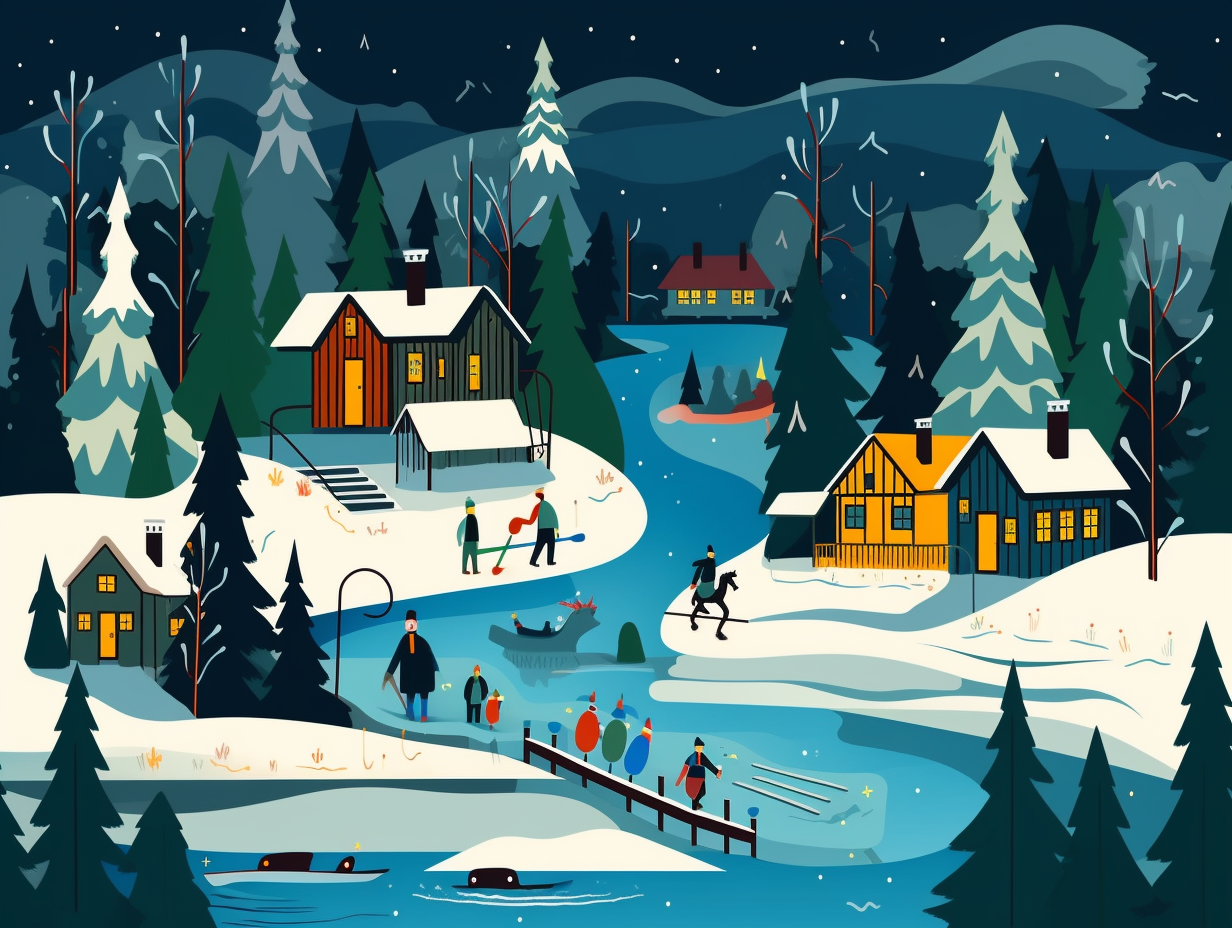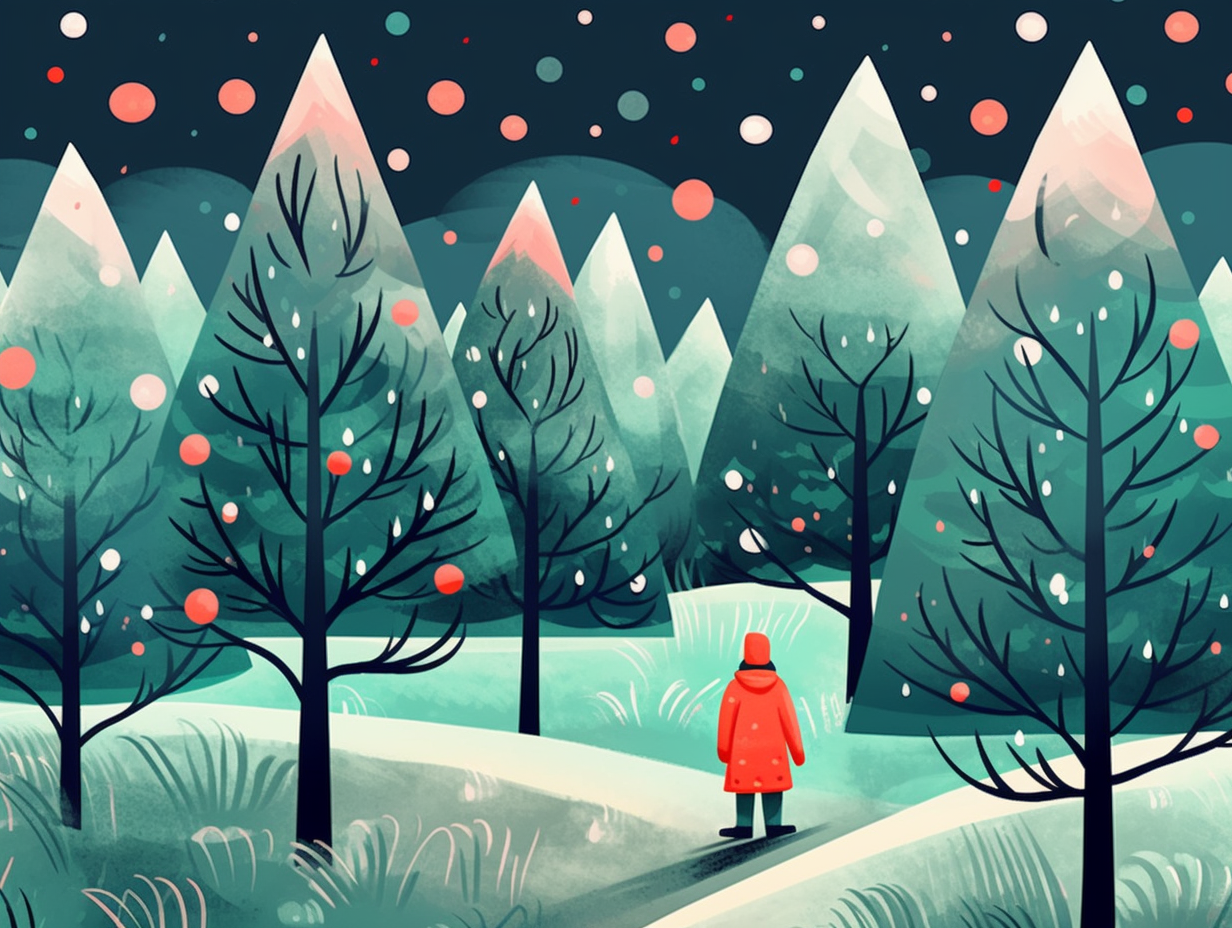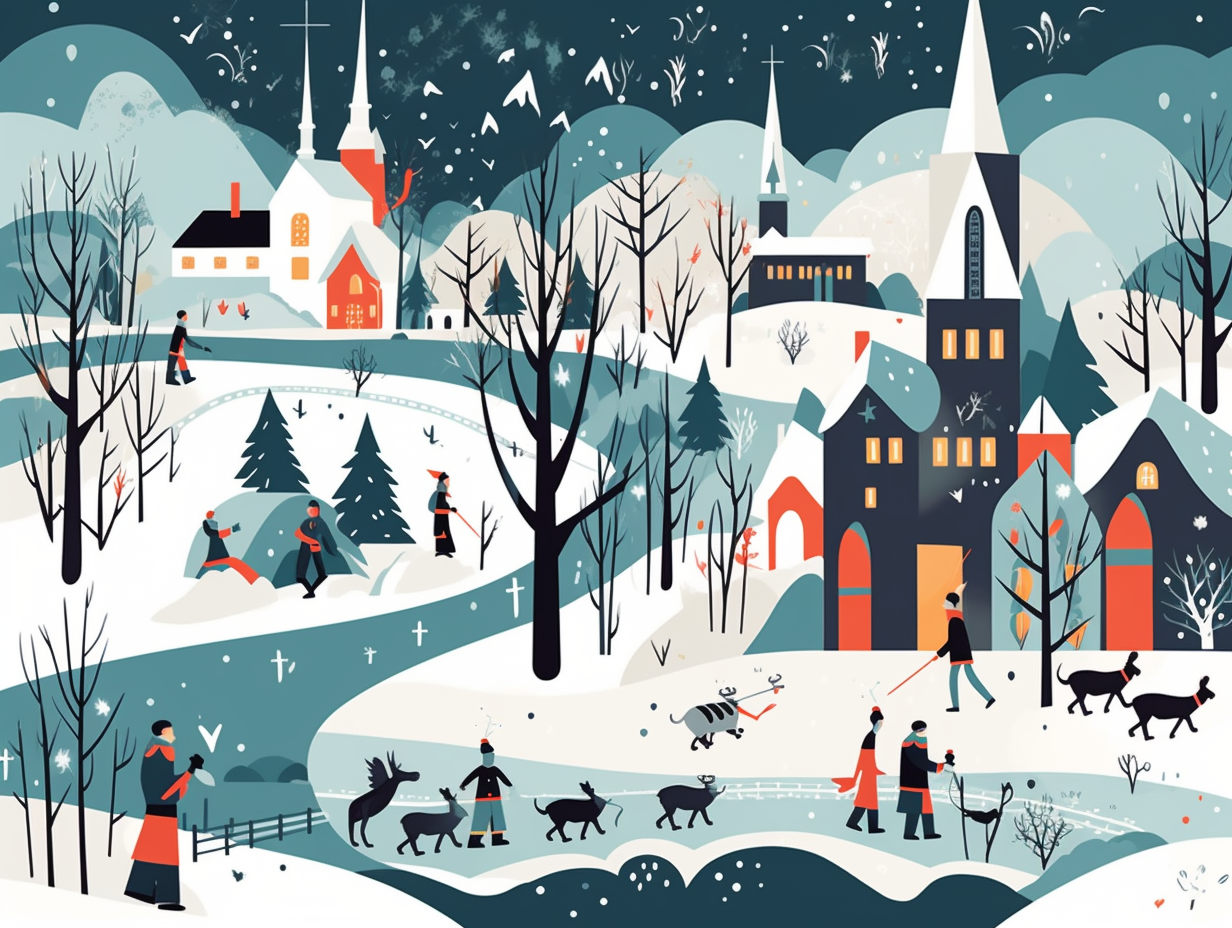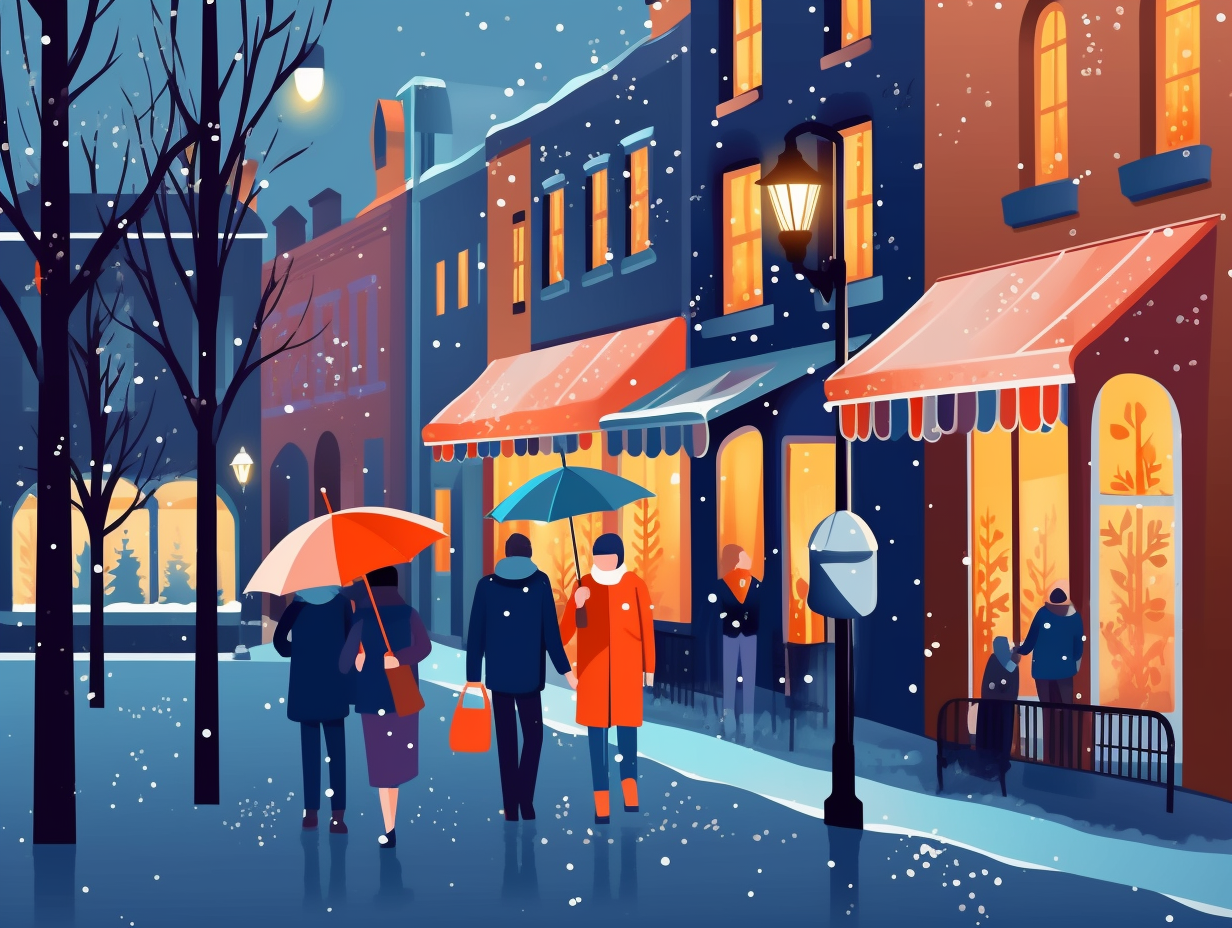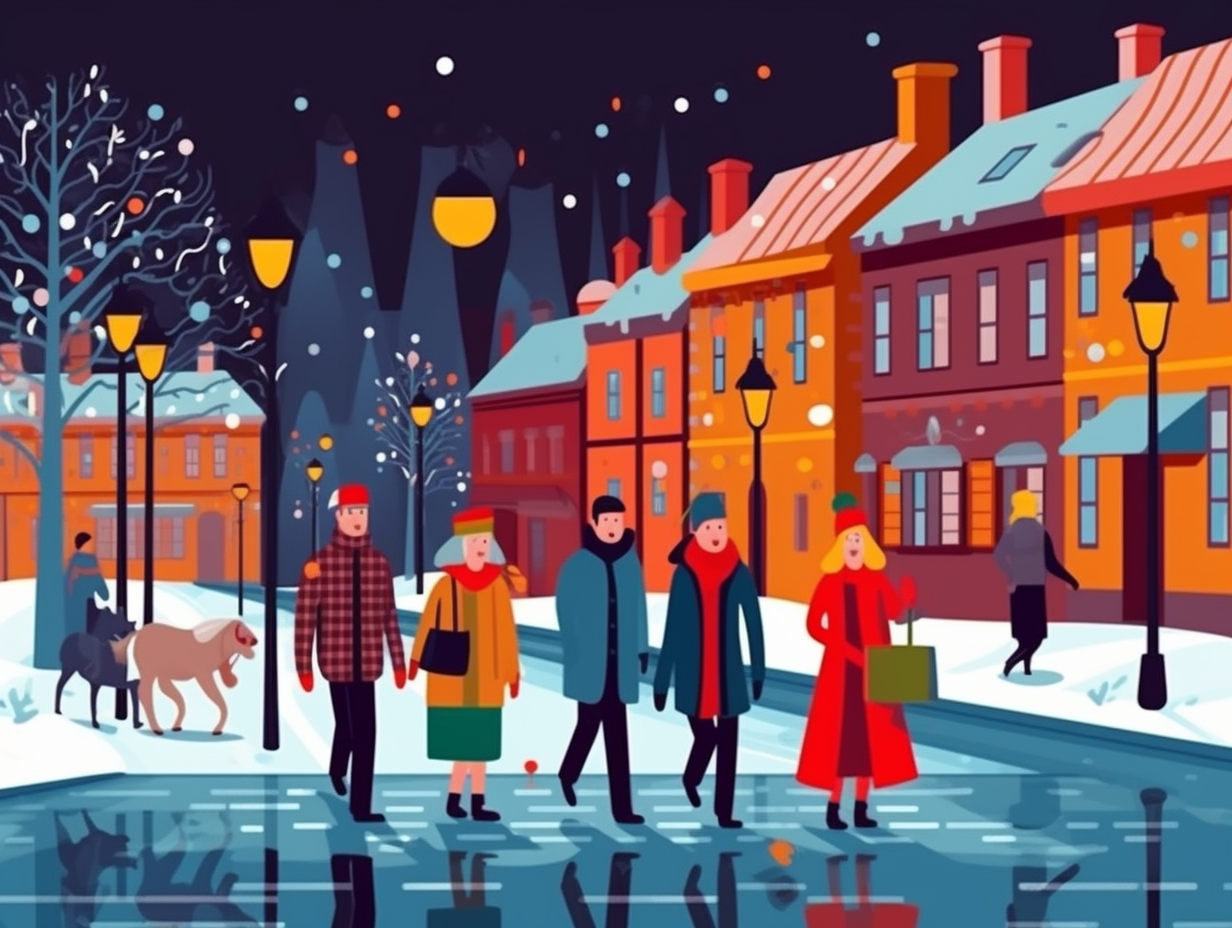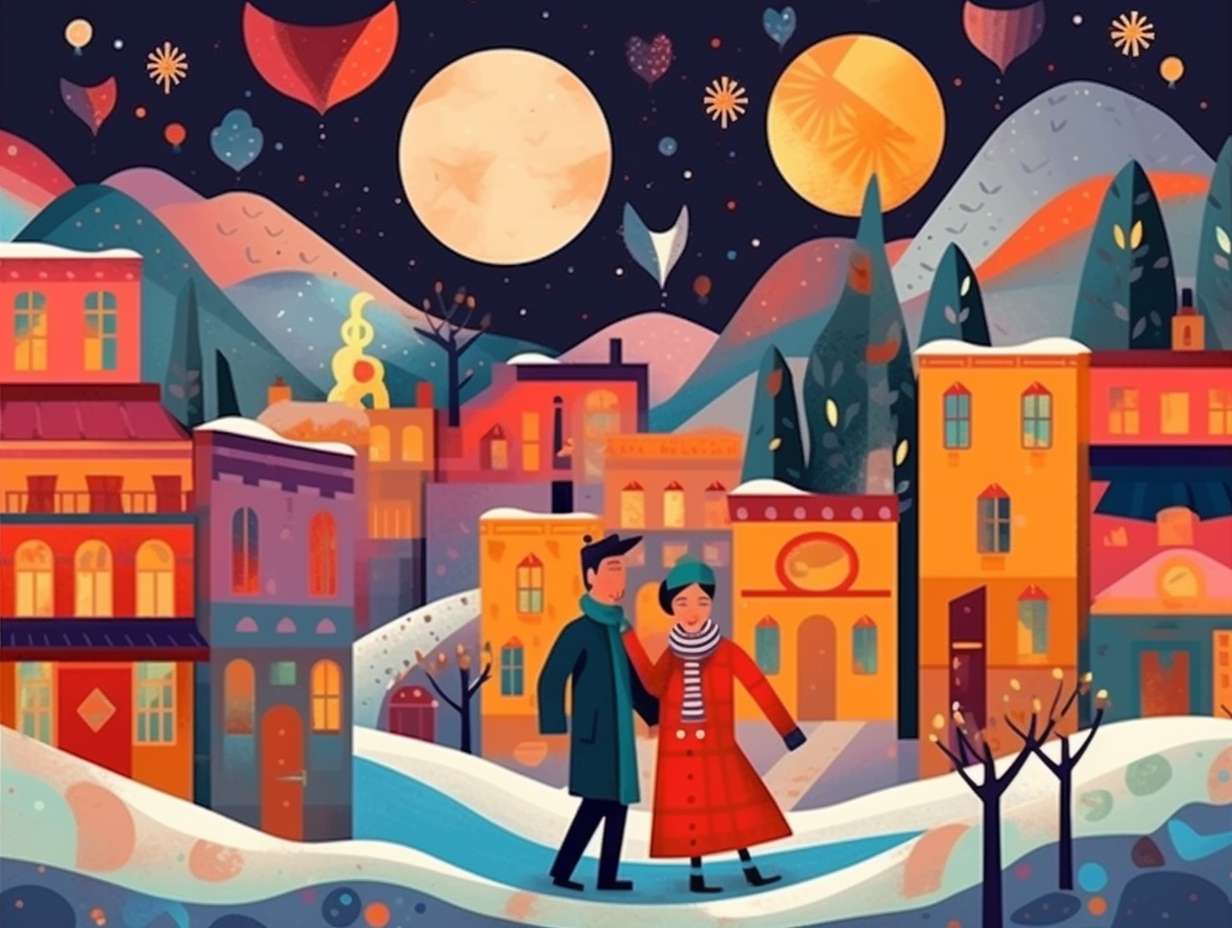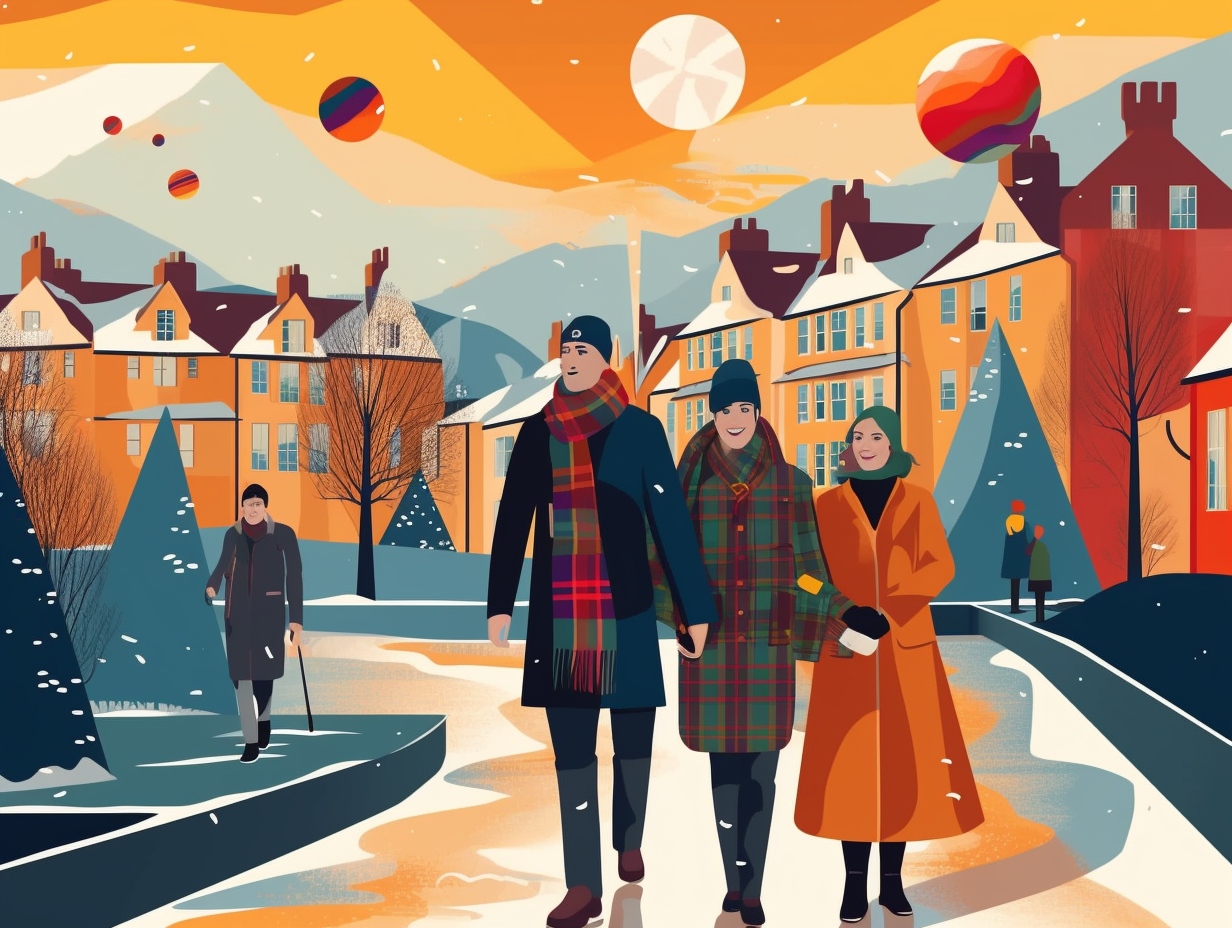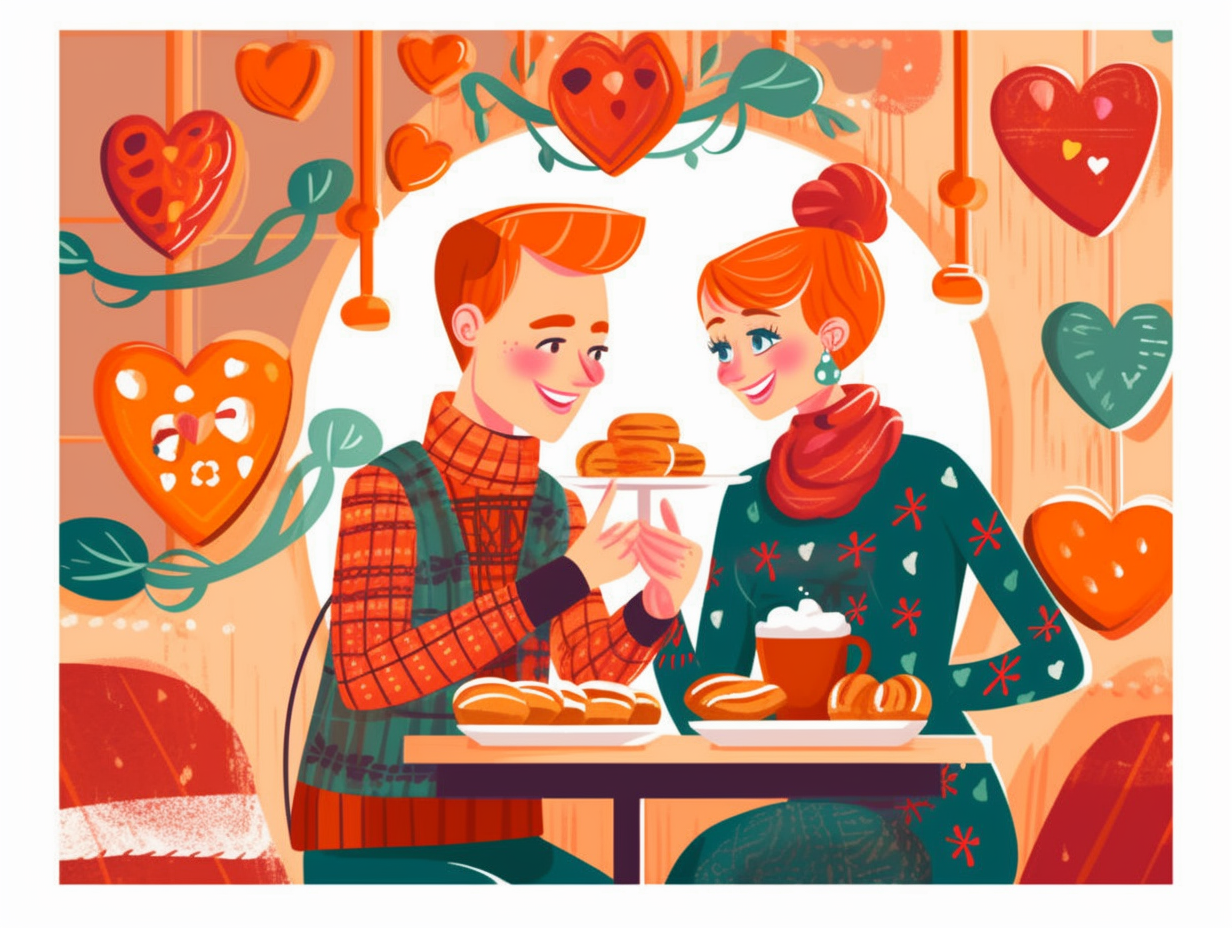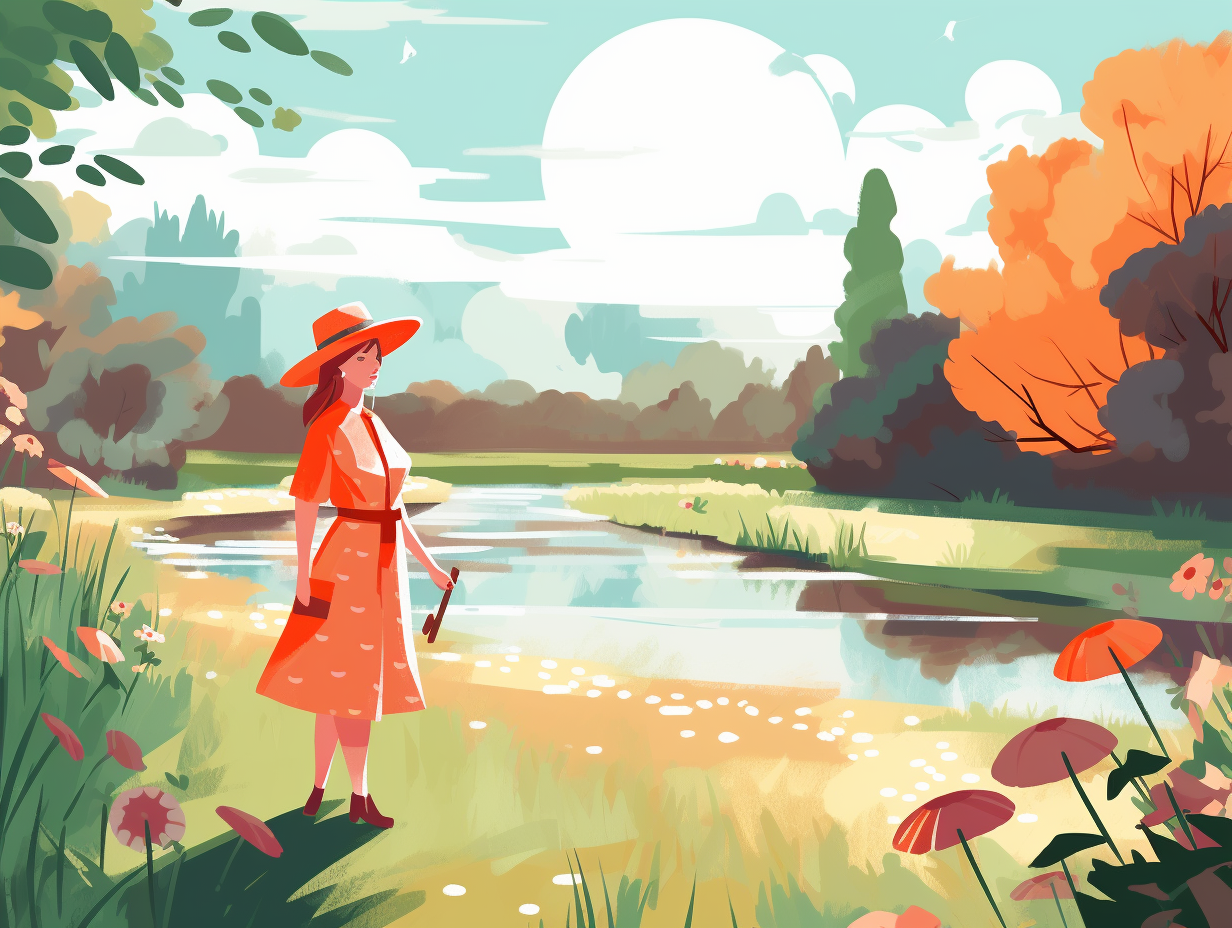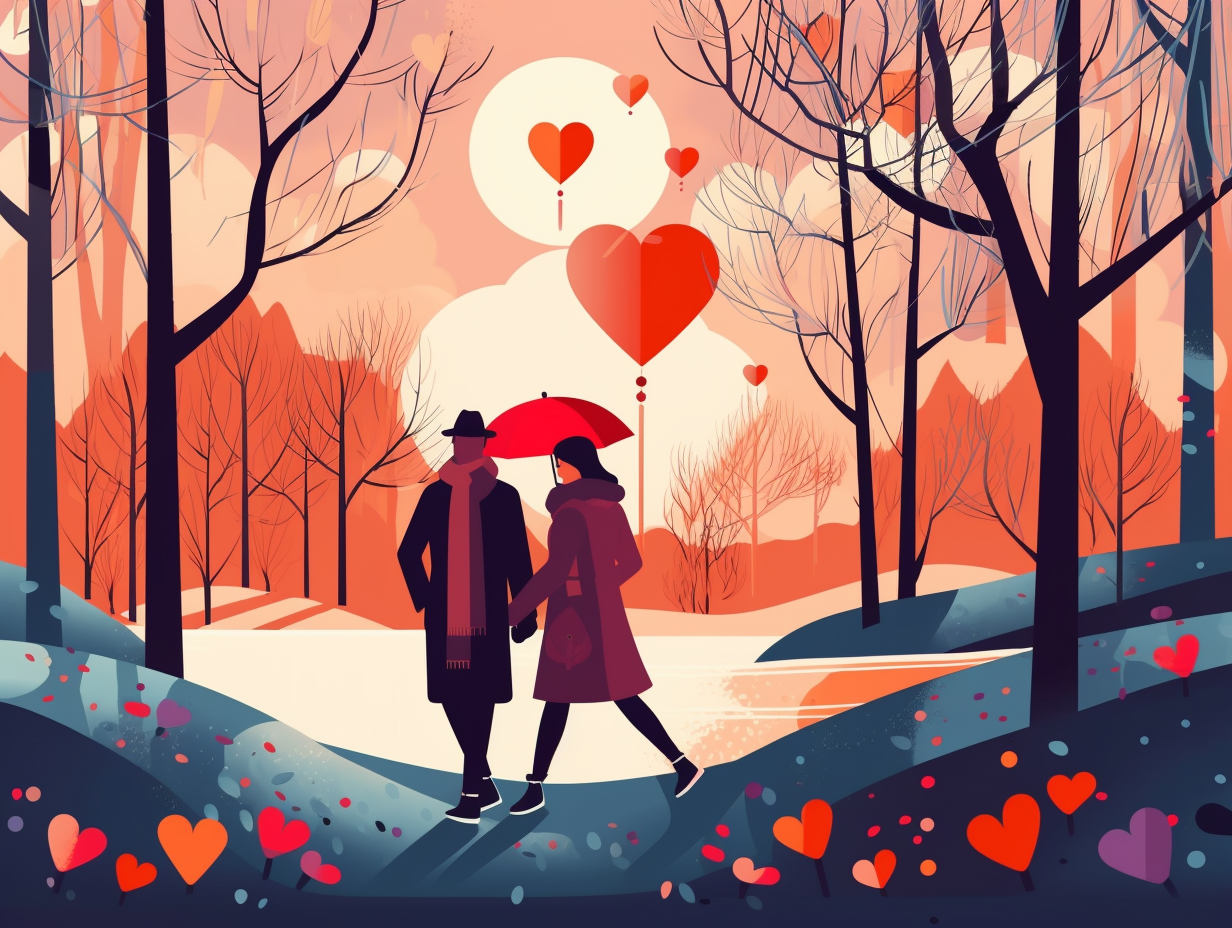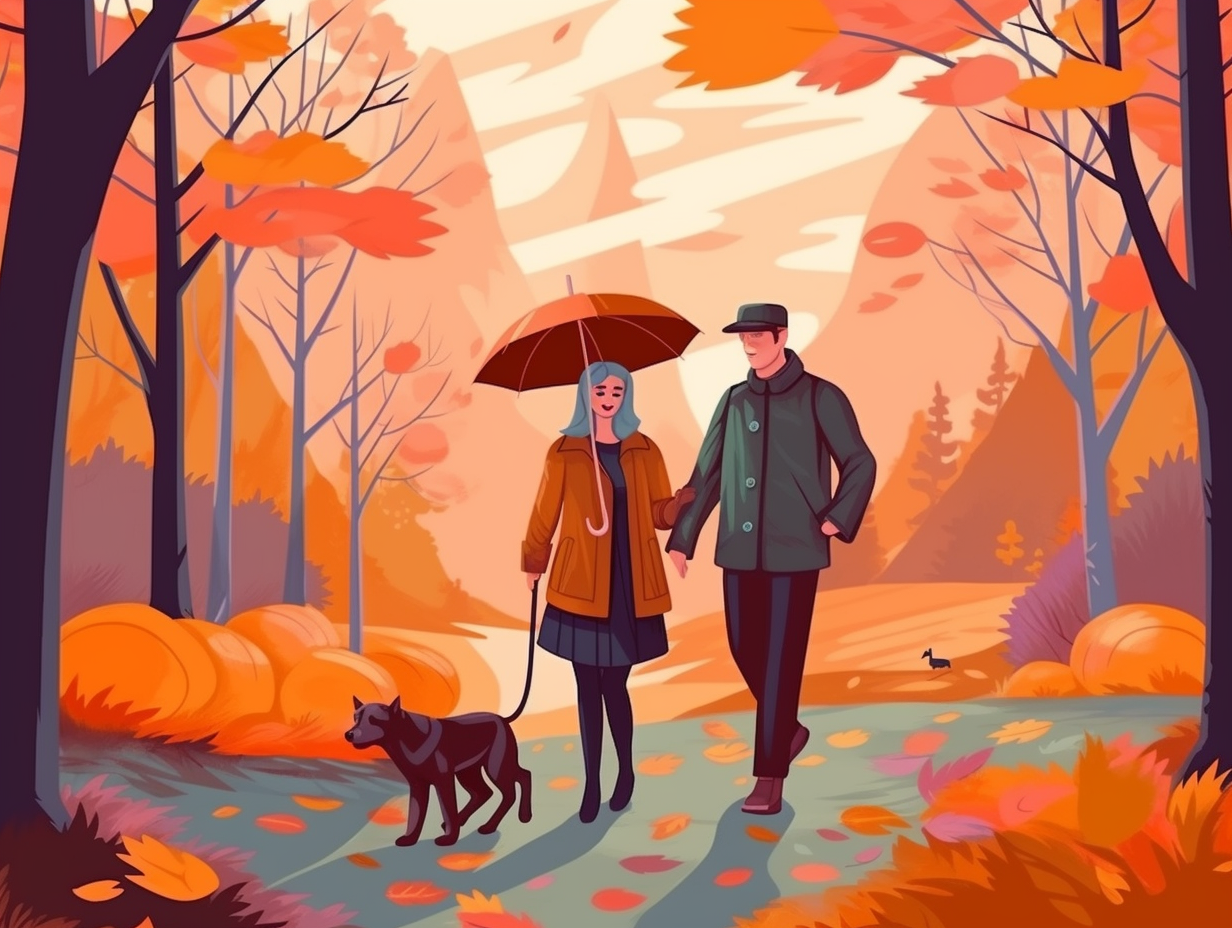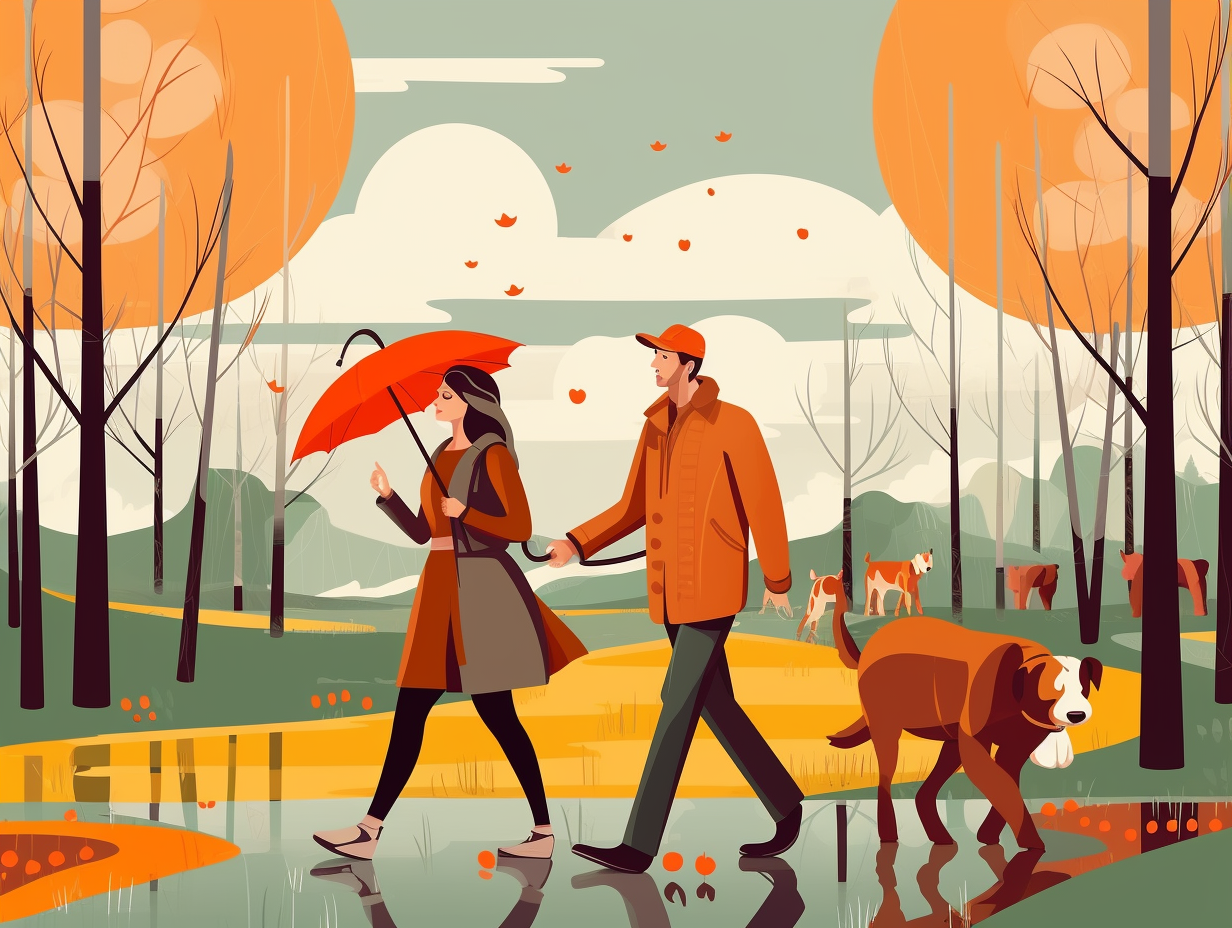Top 25 Spooktacular Fun Facts About Halloween: Uncover the Secrets Behind the Season's Tricks and Treats!
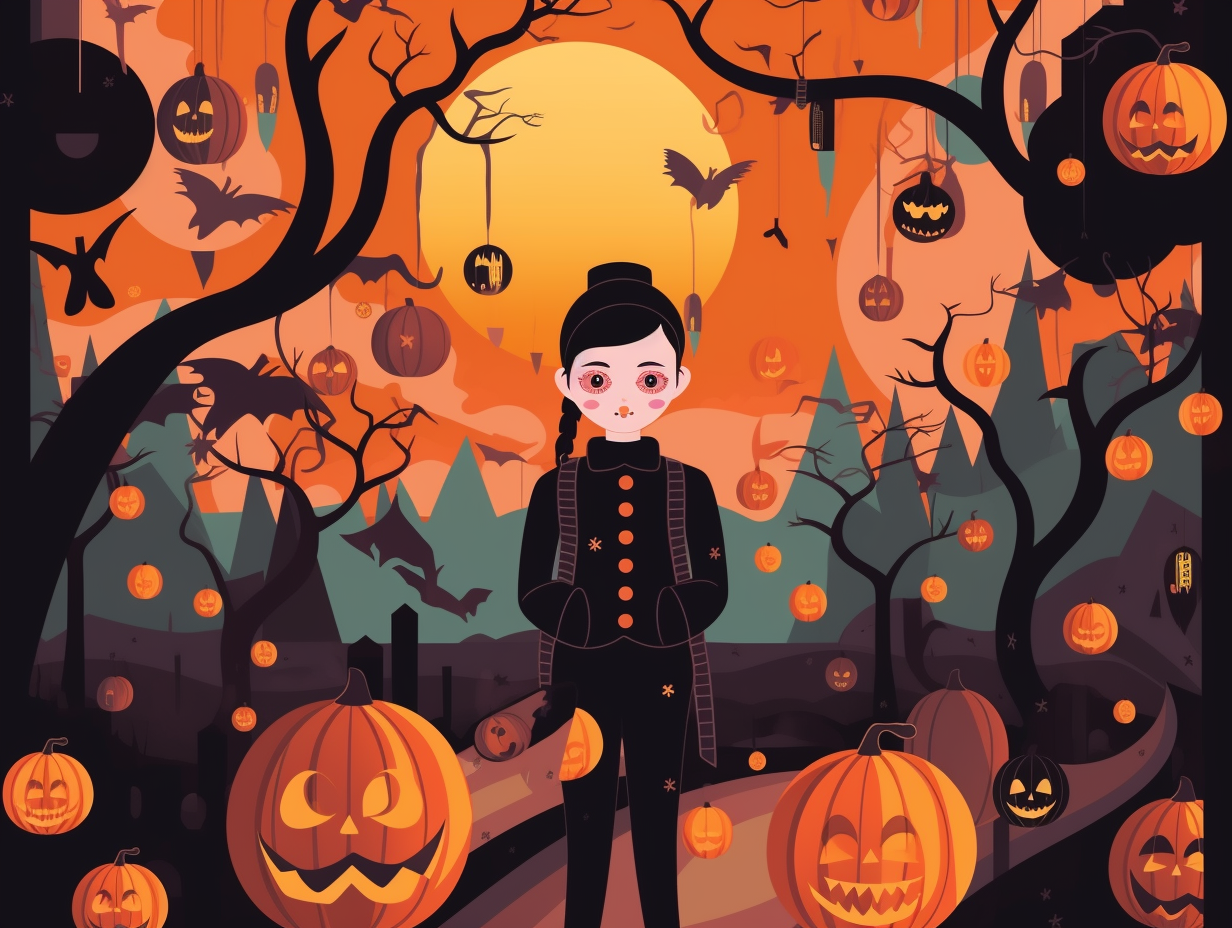
1. Celtic Origins of Trick-or-Treating
Before succumbing to the "spirit" of door-to-door candy heists and mask-fueled mayhem, Halloween was more than just a spooky soiree for fiendish frights and costume contests: Trick-or-treating actually has its roots in ancient Celtic festivals and Roman Catholic holidays, evolving through time alongside whimsical outfits and treat-based bargaining tactics to become the sugar-fueled, ghostly galavanting we know and love today.
Source => history.com
2. The Great Pumpkin Flood of 1786
Before we became consumed with pumpkin spice lattes and Charlie Brown's phantom pumpkin pal, mother nature was busy hosting her own pumpkin-themed aquatic extravaganza: The Great Pumpkin Flood of 1786 really happened in eastern Pennsylvania, causing whole pumpkin crops to be dragged away by the waters, and once the flood receded, pumpkins were found scattered all over the place, cementing their position in Halloween history.
Source => carnegiemnh.org
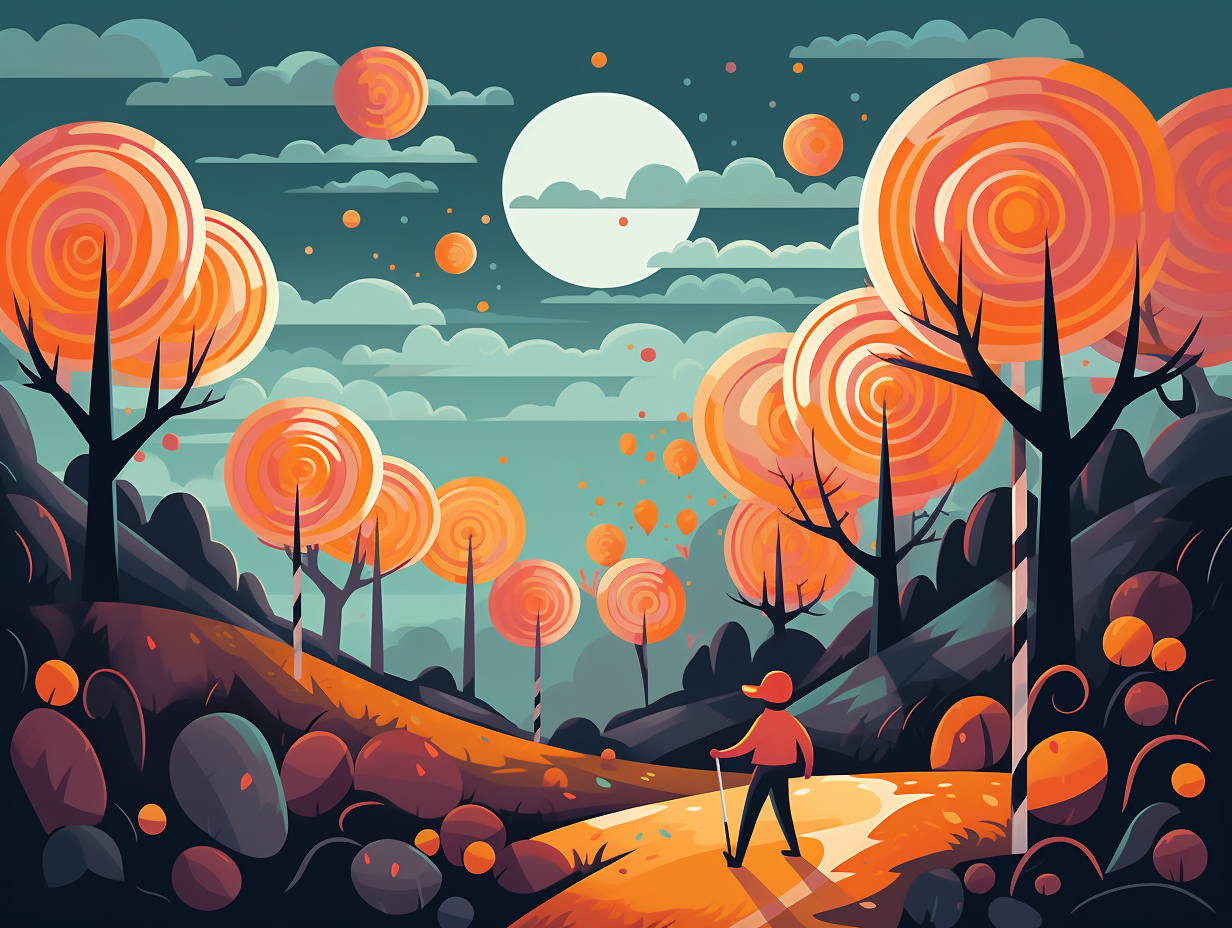
Did you know that over 35 million pounds of candy corn are consumed every year? Discover the sweet history of this polarizing treat, which even has its own dedicated holiday on October 30th! 🌽🍬
=> Fun Facts about Halloween-Candy
3. Stingy Jack and Turnip Lanterns
Before Stingy Jack became a smashing(ly) good pumpkin carver, he was really into turnips: The term "Jack-o'-lantern" originated from a tale about Stingy Jack, who wandered the world carrying a burning coal inside a hollowed-out turnip, creating a prank lantern with a crude face. As Irish immigrants brought the legend to America, pumpkins replaced turnips, and by the late 19th century, jack-o'-lanterns had evolved into a must-have Halloween decoration.
Source => mentalfloss.com
4. $8.8 Billion Halloween Spending
Get ready for a frightfully expensive celebration, because everyone's favorite night of ghosts, witches, and candy is haunting our wallets with reckless abandon: Americans are projected to spend a spine-tingling $8.8 billion on Halloween this year, with each ghoul and goblin shelling out an average of $86.27 on costumes, decorations, greeting cards, and enough candy to keep orthodontists cackling like mad scientists.
Source => abc7news.com
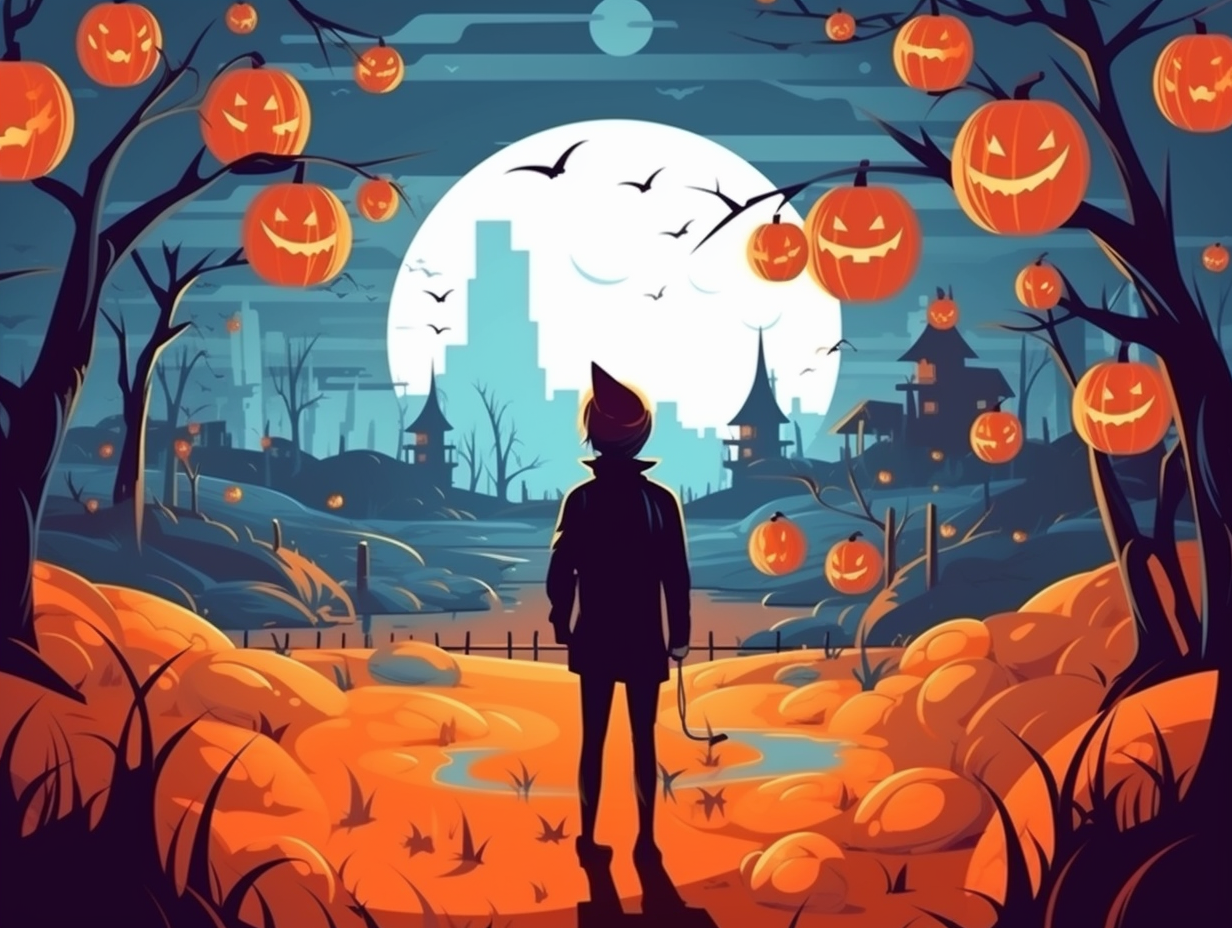
5. Bobbing for Apples: Roman Roots
Apples aren't just for keeping the doctor away: they also moonlight as flirty little fruit fortune-tellers on Halloween. This DIY-divination has its origin in ancient Rome, where young men and women participated in the game of bobbing for apples as part of the Pomona festival—honoring the goddess of agriculture—to predict their romantic future. When the Romans conquered the British Isles, the Pomona festival merged with the local Samhain festival, stealthily seducing this frisky fruit game into our spine-chilling Halloween traditions.
Source => blogs.loc.gov
6. Irish Turnips to American Pumpkins
Once upon a spooky autumn night, gnarly turnips whispered frightening secrets of scary faces to plump pumpkins just longing to be carved into Halloween's finest – and Jack was surely ready to make a deal with them too: The custom of transforming pumpkins into Jack-o-lanterns has its roots in Ireland, where people sculpted turnips and potatoes to spook evil spirits during Samhain, eventually opting for pumpkins when Irish immigrants introduced the tradition to America in the 19th century – thanks to the availability of these mischievous gourds aplenty!
Source => history.com
7. Debunking Black Cat Halloween Myths
Step aside, witches and wizards, for the black cat has reclaimed its rightful throne as a purr-fectly innocent Halloween icon: Turns out, there's zero evidence to suggest adopting black cats around Halloween puts our feline friends in danger; in fact, experts from the ASPCA, the Humane Society of the United States, and National Geographic have debunked this myth, and many shelters now even promote black and orange cat adoptions during the spooky season.
Source => sheltermedicine.vetmed.ufl.edu
8. Samhain: Halloween's Ancient Celebration
Before witches replaced their broomsticks with vacuums and ghosts got busted by those in tan jumpsuits: Halloween originally began as a Celtic festival called Samhain, marking the end of the harvest season and the start of winter, dating back over 2,000 years. Historians noted that outfits back then included drag attire and mechanical horse heads, rather than the stereotypical animal skins we might've imagined.
Source => nationalgeographic.com
9. Houdini's Haunting Halloween Death
When the going gets tough, the tough get... going onstage sick? Harry Houdini proved that no illness, however grave, could keep him from performing his craft: On October 24th, 1926, the world-renowned magician pushed through a high fever and cold sweats to perform his final show in Detroit, despite his dwindling health. A week later, Houdini passed away on Halloween, with his death attributed to peritonitis caused by a ruptured appendix - though some say a rogue punch to the stomach may have been the true culprit behind this magical exit.
Source => clickondetroit.com
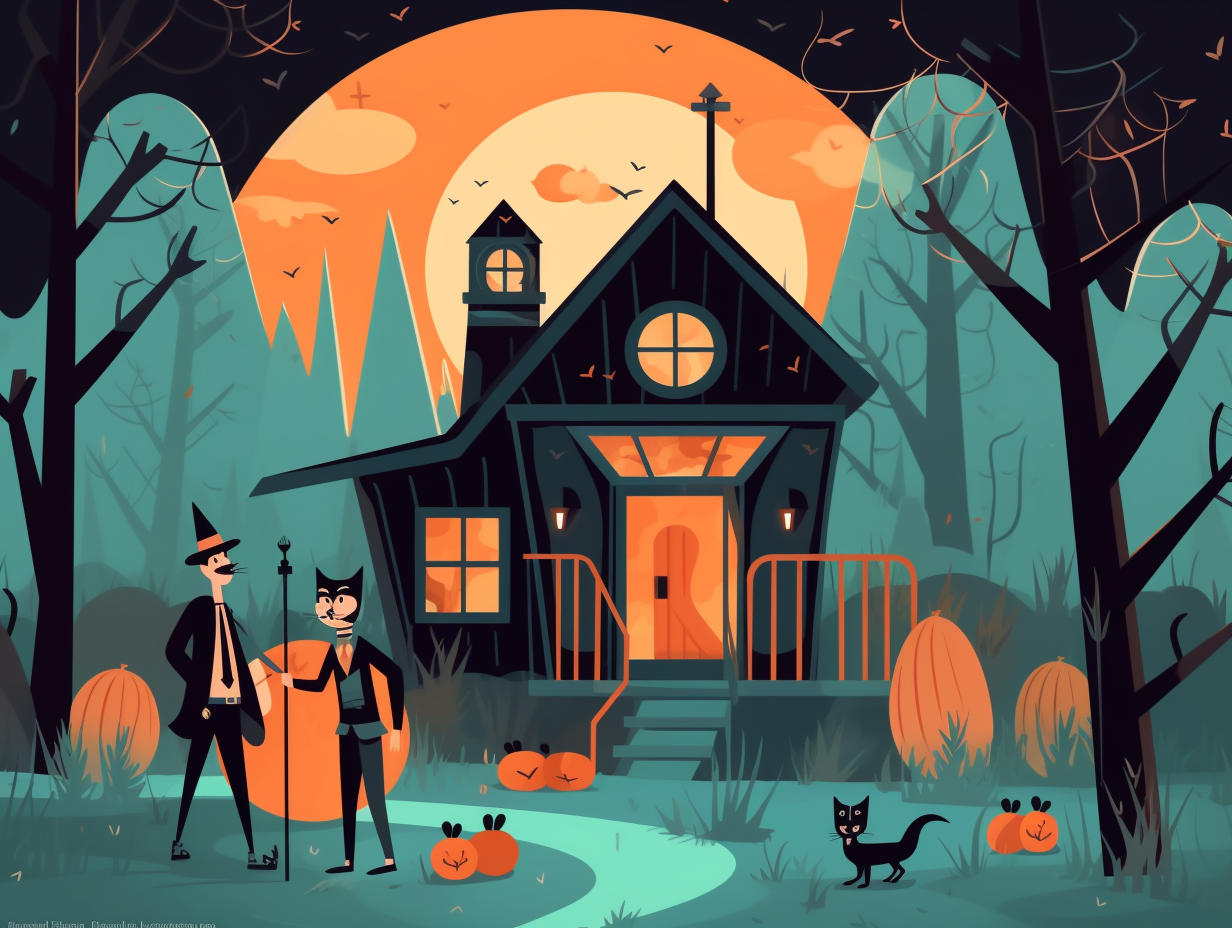
10. Black and Orange: Halloween's Iconic Duo
If black cats and pumpkins threw a party, Halloween would be their dress code: Black and orange became the iconic duo of Halloween as the two colors represent creatures from Halloween folklore lurking in the shadows and the vibrant harvest season of autumn. Paper decoration companies like Dennison and Beistle popularized these hues to add a splash of spookiness and seasonal flair to every Halloween bash!
Source => marthastewart.com
11. Fortune-Telling Halloween Brack Cake
Who needs a crystal ball when you've got a cake? Irish fortune-tellers of yore had the perfect recipe for predicting your future – and it was baked right into a scrumptious dessert: Enter the Halloween Brack, a delightful cake filled with hidden objects that foretold one's fortune. Things could get a little sticky, though, as a pea signified lean times, while a coin promised riches, and a ring forecasted nuptial bliss. This treasure hunt, baked into a yeasted bread with sultanas and raisins, was made even more exciting by the inclusion of hot Irish tea.
Source => theirishjewelrycompany.com
12. Walpurgis Night: Witches' Mountain Party
When witches used to have wild parties in the 6th century, it wasn't on Halloween, but rather at a rip-roaring peak-top hootenanny in the Harz Mountains called Walpurgis Night: Celebrated on April 30th, this Viking festival originally involved gigantic bonfires to ward off evil spirits and bring in springtime, but later evolved into an event named after Saint Walpurga, an anti-witchcraft nun. Folklore had witches convening on Mount Brocken and locals counteracted their mischief with bonfires and noise, with some European communities even hosting their own mischievous version of Trick or Treat!
Source => liveabout.com
13. Spookley: Anti-Bullying Square Pumpkin
In a world where being a square is often frowned upon, one brave gourd has come forward to squash those judgments: Spookley the Square Pumpkin serves as the "Official Spokes-Pumpkin" for National Bullying Prevention Month, promoting acceptance and inclusion through educational resources, YouTube videos, and even Spookley-themed events at various venues nationwide.
Source => pacer.org
14. The Murky Origins of "Witch"
Witches, broomsticks, and a whole lot of misunderstood: Witch is such an ambiguous term, even scholars can't help but throw up their hands and believe they can fly. The tangled web we weave: The word "witch" traces a mysterious path from Old English nouns "wiċċa" and "wiċċe," denoting male and female practitioners of maleficium, or harmful sorcery, with its Proto-Germanic and Proto-Indo-European origins still up for debate, and the term historically referring to both genders depending on language and culture.
Source => en.wikipedia.org
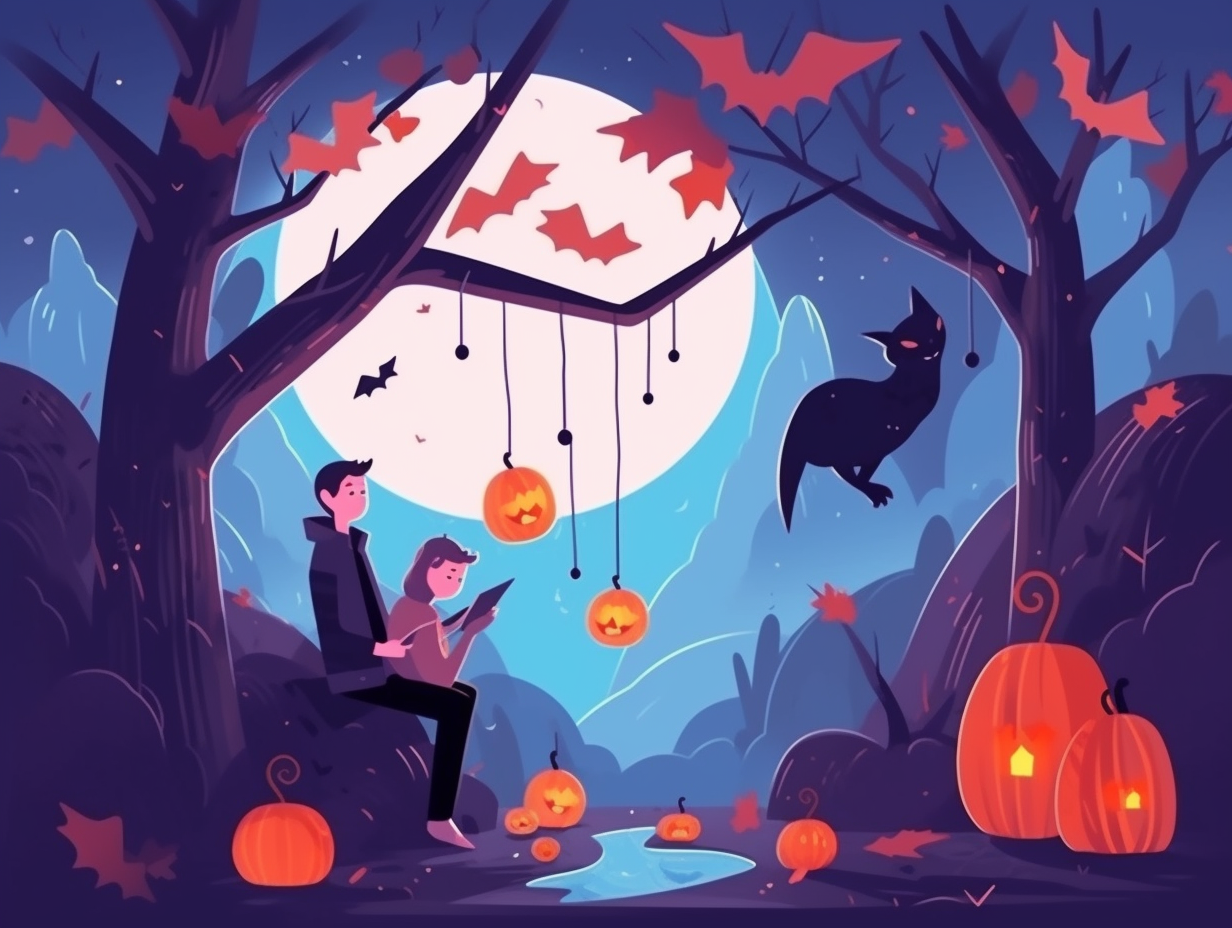
15. Mashed Potato Love Oracles
Mashed potato oracles of love? No, we're not talking about the next rom-com flick: Back in 18th century Ireland, it was believed that finding a hidden ring in a bowl of mashed potatoes on Halloween night would bring luck, love, and prosperity to the fortunate potato sleuth, all stemming from the ancient Celtic festival of Samhain.
Source => metro.us
16. Bobbing for Apples' Roman Origins
Before bobbing for apples turned into a soaked hair horror story: The Romans hosted an annual festival to honor goddess Pomona, the fruit and orchard diva, who crafted the first juicy apple harvest of the year. And although we can't prove it, that may just explain how Halloween and bobbing for apples became a weirdly wet'n'wild tradition.
Source => dinosaursandbarbarians.com
17. King Lycaon's Tests for Zeus
Before Zeus could say "he's tanner than I remember": King Lycaon of Arcadia, who founded the city Lycosura, established a cult of Zeus Lycaeus, and began the tradition of the Lycaean Games, once tried to test the god by killing and cooking his own son. Despite this, Lycaon went on to become a culture hero.
Source => en.wikipedia.org
18. Halloween Doppelgängers Worldwide
From "Day of the Dead" fiestas to the spine-chilling Vodou rituals, it seems the world is haunted by Halloween doppelgängers: Many countries, such as Mexico, Haiti, and Nigeria, celebrate; some traditions around the same time include el Día de los Muertos, Vodou rituals, and the Odo masquerade festival. Moreover, All Saints' Day on November 1st in some cultures is a Christian festival featuring family gatherings and silent prayers to honor all saints, though it's not entirely accurate to call it the universal Halloween cousin.
Source => cnn.com
19. Samhain: The Original Ghost Festival
Before Dracula, there was Samhain - the original ghost party host: Halloween traces its origins back to the ancient Celtic festival of Samhain, where 2,000 years ago, the living and the dead got jiggy on October 31st, mingling under the watchful eye of animal-skinned party-goers, sacrificing a goat or two to keep the spirits appeased and the bonfires lit!
Source => my.clevelandclinic.org
20. Frightening $10.1 Billion Halloween Spending
Ghosts and ghouls, prepare your wallets for a frightening splurge: In 2021, Americans spent a spine-chilling $10.1 billion on Halloween, with a fang-tastic $3 billion dedicated to candy purchases alone – soaring past other holidays, just like witches on their broomsticks!
Source => investopedia.com
21. Howden vs. Tasty Pumpkin Varieties
What do Howden pumpkins and an ill-fitting Halloween costume have in common? Both are great for show, but terrible for taste: Howden pumpkins, developed by a Massachusetts farmer in the 1960s, are the go-to choice for jack-o'-lanterns in America thanks to their perfect carving features, but their flavour profile leaves something to be desired. For those with a discerning palate, Sugar Pie, Kabocha, and Carnival pumpkins have been quietly stealing the spotlight at farmers' markets and dinner tables nationwide.
Source => foothilladultcarehome.com
22. Terrifying Turnip Jack-o'-Lanterns
Who needs a pumpkin spice latte when you can have a turnip terror instead? Yes, you heard that right: turnips were actually the OG jack-o'-lanterns with their fantastic gnarly visage warding off evil spirits during Halloween in Ireland, Scotland, and England in the 19th and early 20th centuries.
Source => justbeetit.com
23. Candy Corn's Chicken Feed Past
Before candy corn was the sweet treat we know and love today, it started as chicken scratch – quite literally: Candy corn was originally called "Chicken Feed" by the Goelitz Confectionery Company with packaging boasting a proud rooster and a tagline proudly declaring "Something worth crowing for." But don't be fooled by its farmyard past, this tiny triangle of sugar has truly flown the coop and claimed its place in Halloween history: More than 35 million pounds (or a whopping 9 billion pieces) of this iconic candy are produced each year, making it a staple of Halloween festivities.
Source => bhg.com
24. Ancient Celtic Animal Skin Costumes
Who needs a Zoomba class to camo up when you've got ancient Celts leading the way in animal skin couture? Trust us, you'd give the Kardashians a run for their money while warding off evil spirits at the same time: This fashion-forward practice of donning animal skins and painting faces during the festival of Samhain has now evolved into our beloved tradition of wearing costumes and trick-or-treating on Halloween.
Source => jennysnook.net
25. Professional Mourners in Ancient Cultures
When the going gets tough, the tough hire professional tear-jerkers: In ancient cultures such as Egypt and China, people employed professional mourners who disheveled their hair, beat their exposed breasts, and smeared dirt on their bodies to theatrically grieve at funerals, with some Asian countries even continuing the tradition today.
Source => en.wikipedia.org
Related Fun Facts

